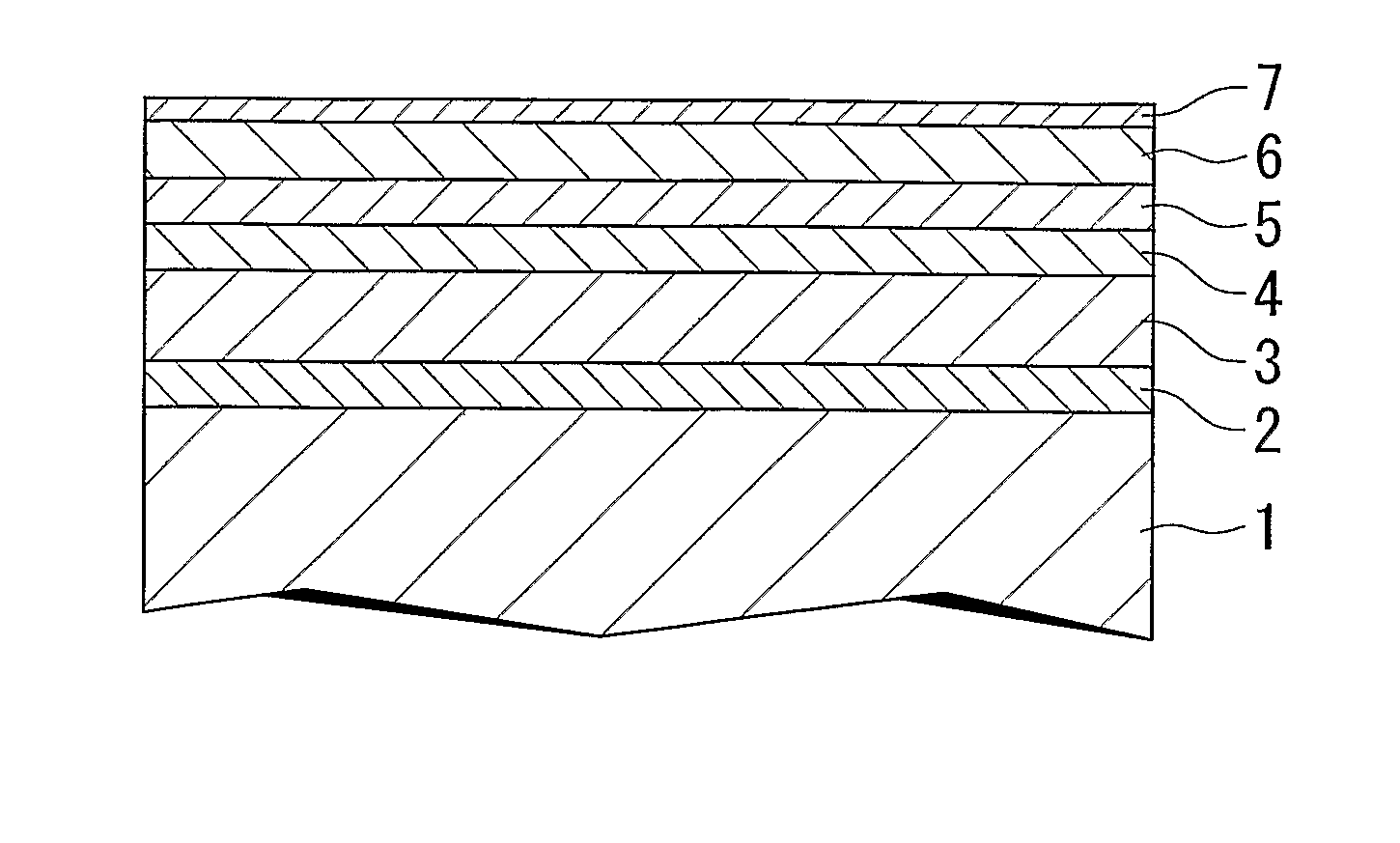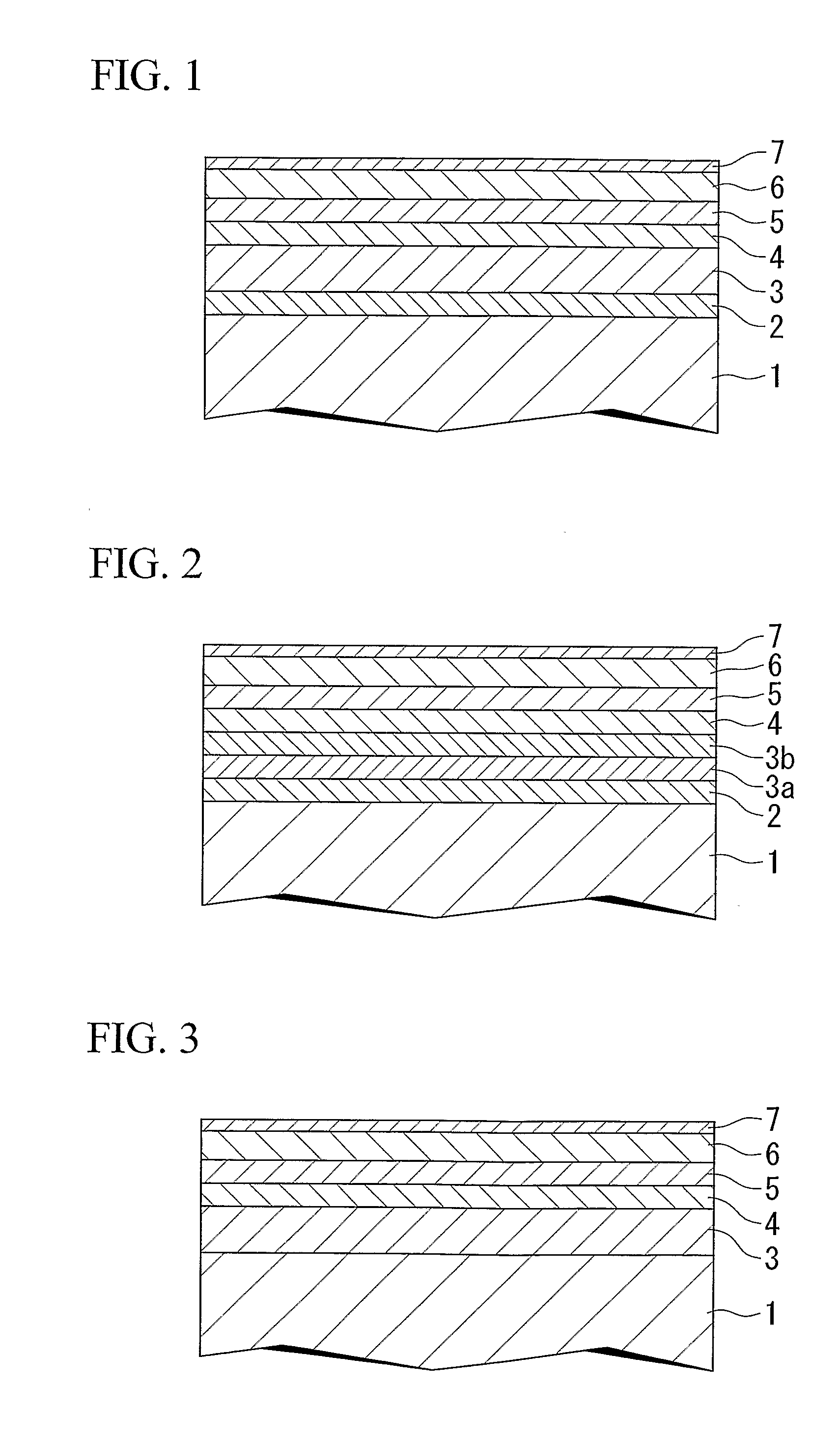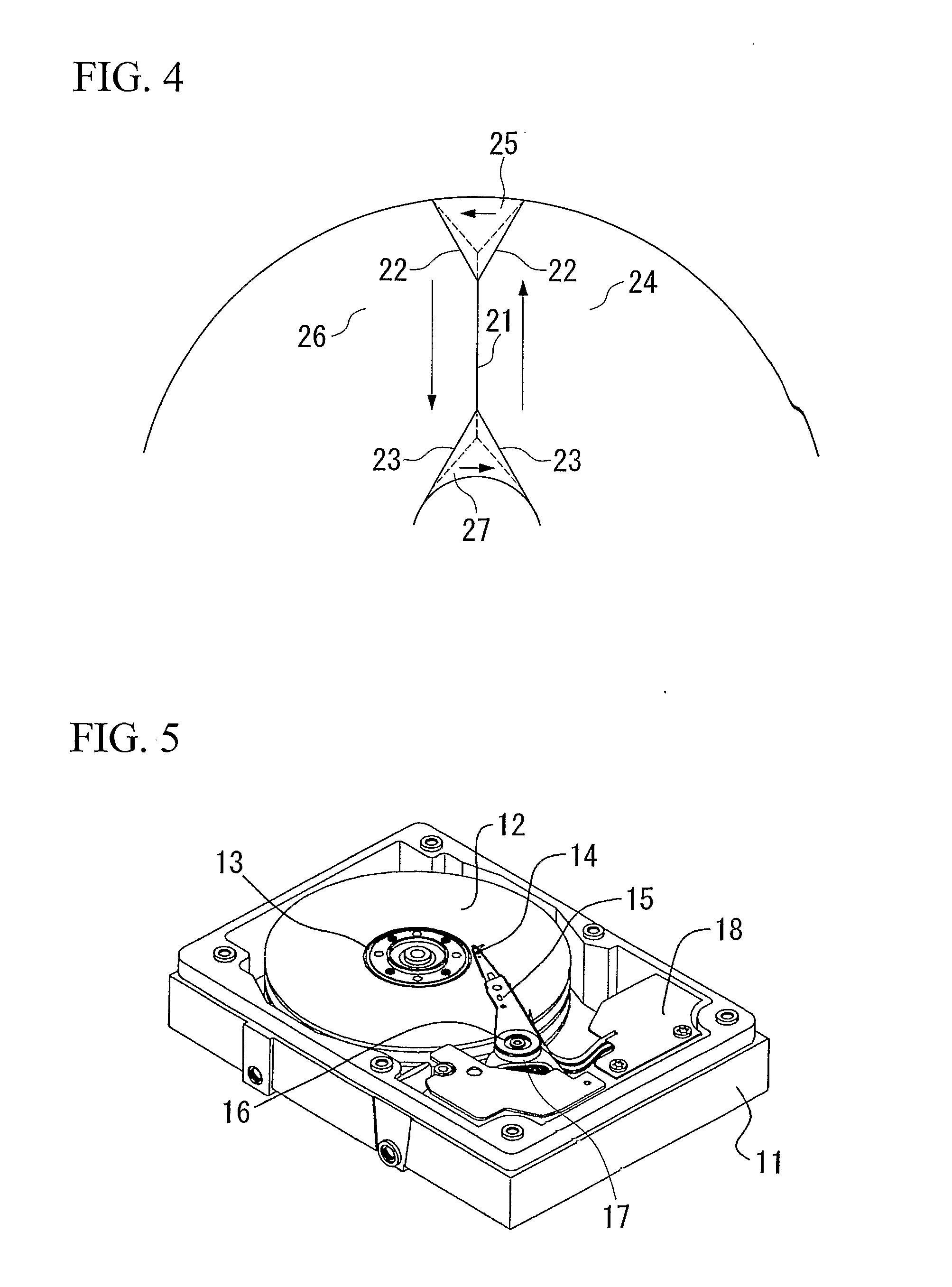Perpendicular Magnetic Recording Medium Using Soft Magnetic Layer Which Suppresses Noise Generation, And Perpendicular Magnetic Recording Apparatus Therewith
a perpendicular magnetic recording and soft magnetic layer technology, applied in the field of magnetic recording mediums, can solve the problems of large noise generated by the soft magnetic layer of the perpendicular two-layer medium, particularly the noise resulting from the magnetic wall, and difficult to suppress the noise generated by the soft magnetic layer, so as to reduce noise, suppress the magnetic anisotropy, and promote the effect of magnetic flux leakag
- Summary
- Abstract
- Description
- Claims
- Application Information
AI Technical Summary
Benefits of technology
Problems solved by technology
Method used
Image
Examples
working examples
Working Example 1
[0133] The magnetic recording medium shown in FIG. 1 was produced as shown below.
[0134] In the production process mentioned below, Ar gas was used as sputtering gas in a sputtering method using a chamber in which the degree of vacuum was set to be not higher than 3×10−5 Pa.
[0135] A hard magnetic layer 2 which has the magnetic anisotropy in a surface direction is formed on the substrate 1 which is made of a glass by a sputtering method. The hard magnetic layer 2 was formed so as to have the constitution including the first layer (40 nm in thickness) which consists of V and the second layer (20 nm in thickness) which consists of Co:18 at %, Pt: 8 at %, and Cr, formed on the first layer.
[0136] When forming the first layer, the pressure in the chamber was set to be 0.6 Pa using the target which consists of V. When forming the second layer, the pressure in the chamber was set to be 0.5 Pa using the target which consists of the above CoPtCr.
[0137] Subsequently, the s...
working examples 2 and 3
[0194] The magnetic recording medium shown in FIG. 3 was produced as mentioned below.
[0195] The magnetic recording medium G was produced in the same way as in Working Example 1, with the exception of not forming the hard magnetic layer 2, using Fe: 24 at %, Co: 16 at %, B: 4 at %, and C for the soft magnetic layer 3, and setting the thickness of the soft magnetic layer 3 to be 50 nm.
[0196] When magnetostatic characteristics were evaluated in the same way as in Working Example 1, and it turned out that the soft magnetic layer 3 had a magnetic anisotropy in a radial direction, the Bs was 19000 G, the Hc was 10 (Oe), and the Bs·Hc was 190 kG·Oe (1500 T·A / m). The measurement result is shown in Table 2.
TABLE 2HcRs−HnSNRmOWdPW50Bs · Hc(kOe)(—)(kOe)(dB)(dB)(nm)(kG · Oe)Working Example2(mediumG)4.41.002.222.244.371190Working Example1(mediumH)4.31.002.121.843.87116
[0197] As for the medium G of Working Example 2, values which are almost equivalent to those of the medium A of Working Examp...
working example 3
[0200] The magnetic recording medium H was produced by the same way as in Working Example 1, with the exception of using Fe: 27 at %, Co: 10 at %, and B for the soft magnetic layer 3.
[0201] The medium H was disposed to a space between two electromagnets, and the hard magnetic layer 2 was magnetized, by generating the magnetic field of 10000 (Oe) from the electromagnet while rotating the electromagnet at 2000 rpm and moving the electromagnet in the direction of the perimeter linearly from the inner circumference, and thereafter stopping the rotation of the medium H.
[0202] The direction of the magnetostatic characteristics of the soft magnetic layer 3 and magnetic anisotropy and the direction of magnetization of the hard magnetic layer 2 were investigated similarly to Working Example 1.
[0203] The Bs of the soft magnetic layer 3 was 16000 G, the Hc was 1.0 (Oe), and the Bs·Hc was 16 kG·Oe. It turned out that although the magnetic anisotropy of the soft magnetic layer 3 was directed ...
PUM
| Property | Measurement | Unit |
|---|---|---|
| thickness | aaaaa | aaaaa |
| coercive force | aaaaa | aaaaa |
| thickness | aaaaa | aaaaa |
Abstract
Description
Claims
Application Information
 Login to View More
Login to View More - R&D
- Intellectual Property
- Life Sciences
- Materials
- Tech Scout
- Unparalleled Data Quality
- Higher Quality Content
- 60% Fewer Hallucinations
Browse by: Latest US Patents, China's latest patents, Technical Efficacy Thesaurus, Application Domain, Technology Topic, Popular Technical Reports.
© 2025 PatSnap. All rights reserved.Legal|Privacy policy|Modern Slavery Act Transparency Statement|Sitemap|About US| Contact US: help@patsnap.com



